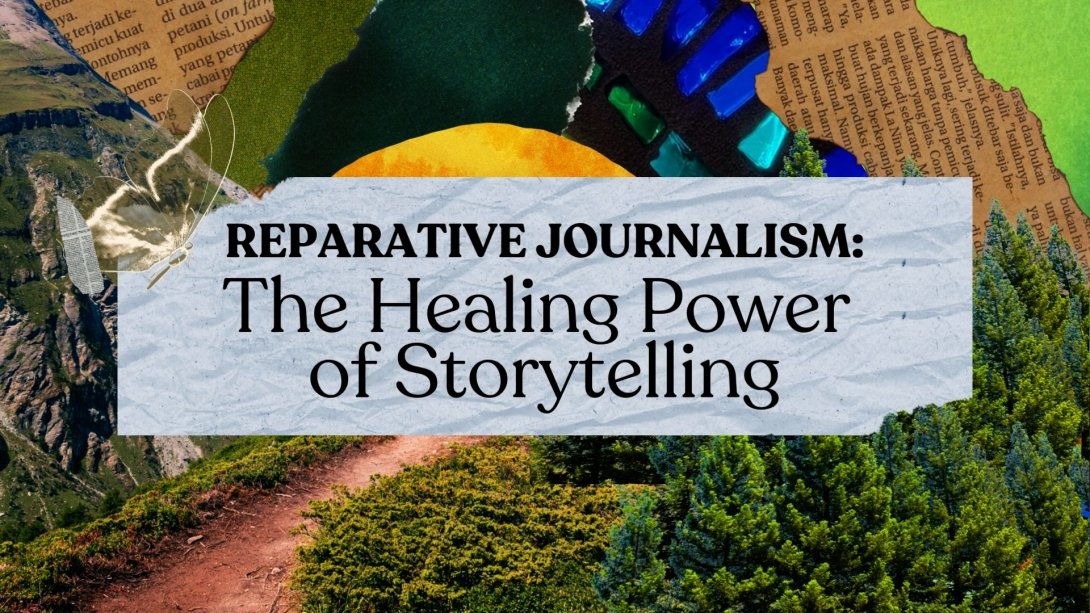Reparative Journalism: The Healing Power Of Storytelling

Diamond Hardiman
Since 2022, I have been researching how to apply a reparations model to the field of journalism in service of a future of media reparations. I’ve studied global-repair movements like LANDBACK, spoken with journalists around the world about what we must prioritize to implement repair into journalistic practices, and attended community sessions focused on addressing the harms of anti-Blackness across institutions and society.
This has culminated in the Reparative Journalism Video Series, a visual roadmap of what’s both required and possible when we center reparative processes in journalism. The Free Press News Voices team has informed and managed this project, with the support and scholarship of Media 2070 members.
Qing Saville, Courtney Morrison and I served as creative directors on the film, which Courtney also edited. We’ve explored the anti-Black foundations of journalism that set the stage for newspapers to commit harm against communities of color for hundreds of years. The nation’s earliest newspapers trafficked in the sale of enslaved people to keep their operations afloat. Newspapers fanned the flames of violence leading up to the 1864 massacre of Arapaho and Cheyenne people in Sand Creek. Local papers fueled the Tulsa Race Massacre of 1921 and covered it up. Publishers worked together to inflame anti-Japanese sentiments during World War II across the West Coast. These are just a few examples from a troubling history that journalism must contend with.
After understanding journalism’s harmful origins, we explored what might be possible in terms of building infrastructural and communal repair. Taking notes from the reparations movement, LANDBACK and the truth commissions in South Africa, we explored how journalism could explore, uncover and mend its history of exclusion, marginalization and division.
Journalism rooted in community
In our third installation in this series, we present “Reparative Journalism: The Healing Power of Storytelling” alongside a discussion guide that explores the lived experiences of two journalists who are practicing reparative journalism.
We learn from Tonia Hill, an award-winning multimedia reporter at The Triibe, who discusses how her connection to her home in the South Side of Chicago informs the attentiveness and communal care she prioritizes in her reporting. She reminds us of the responsibility journalists have to provide a service that informs and empowers community members throughout their daily lives.
We also sit with DaLyah Jones, a program officer at the Racial Equity in Journalism Fund at Borealis Philanthropy, who has nearly 10 years of experience working in and across journalism spaces. They share wisdom of the country from Deep East Texas and paint a picture of how storytelling is a lineage she has stepped into through her family, the land and through movement-journalism leaders. They emphasize how storytelling can shift conditions to create the space necessary to facilitate individual, communal and societal healing.
We are so grateful to Tonia and DaLyah for sharing the wisdom, love and communities that ground their reparative approach to storytelling. They remind us that reparative journalism is more than content and infrastructural repair; it is also a reclamation of the lineage of storytelling. It is a return to the ways that people of color have always told stories and a reminder of the sacred role journalists play in being storytellers and story keepers.
Watch “Reparative Journalism: The Healing Power of Storytelling” and learn more about the topics discussed in this accompanying discussion guide.
Help Free Press continue fighting for journalism that repairs harm: Donate today.